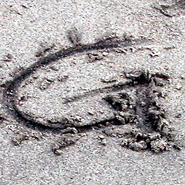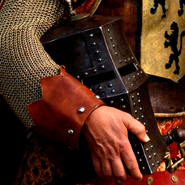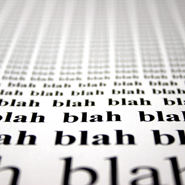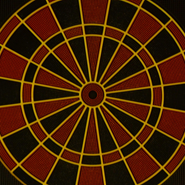Names are important. Imagine you go to an event, maybe a rehearsal, and meet a load of people who’ve never met each other before. Next week, you all meet up again. Some people only remember two or three names and will probably go back and talk to those people again. Some go round to each person, address them by name and ask how they’ve been doing. Who’s the better networker?
Why are names important?
Think about people who are significant to you. I’d hazard a guess that you know their names. When you meet new people and you remember their names it tells them that they are important to you. They were significant enough and made enough of an impression that you remembered their name. If you forget their name, unfortunately, the message they get is that they were not significant or impressive enough to be worth remembering.
In the excellent book “How to Win Friends and Influence People” (if you haven’t read it yet, go get it), Dale Carnegie said, “Remember that a person’s name is to that person the sweetest and most important sound in any language.” It’s a sound we will have heard countless times throughout our lives. It is intimately connected with our notion of our selves. We are attuned to it. It gets our attention when we hear it and it focuses our attention on the speaker.
Every time you use someone’s name you are giving them a little compliment. You are saying that they are important, that they are significant in your thoughts right now. Therefore it’s a good idea to use people’s names when you are talking to them. Don’t overdo it though or it can be creepy, just like complimenting someone excessively would be. Once when you greet them, once or twice during the conversation and once when you say goodbye should be ample. (Remember, networking is just having conversations, nothing more.)
Remembering names
What this means is that it’s useful to be good at remembering names. Not many of us are blessed with this gift. We all know that horrible feeling when we see someone we know we’ve met several times before but we can’t remember their name. How can we avoid this?
A full description of every technique for remembering names would take too long. I’m going to outline nine of the most common methods used. If you want to find out more then google ‘remember names’.
From these nine methods, pick the ones that work best for you. I doubt anyone uses all of them. Some will be more effective for some people than others. Try them out and see which ones you have success with.
1. Pay attention
This one is so simple yet so many people overlook it. Now that we know how important names are, we must make sure we pay attention when someone gives their name. Listen carefully for it at introductions. Make sure we’ve heard it right. Ask them to repeat it if necessary, maybe even spell it. If we’re not even paying attention we have no chance of remembering. This is a first step for everyone.
2. Repetition
Repetition is a staple of memory techniques. The more times you repeat something the more likely you are to remember it. When you learn someone’s name, try to use it in conversation with them as soon as possible. I often try to do this straight away. If I’m introduced to Joe I will say, “Good to meet you Joe.” This reinforces it in my memory.
However, we can’t use someone’s name too often out loud, so try to repeat it internally (silently!) while you’re talking to them and maybe shortly afterwards too. You can get far more repetitions done this way. Just make sure you don’t lose track of the conversation or seem disinterested otherwise you might undo all the good work you’re doing by remembering their name.

3. Picture the name written on their forehead
This is good for people with a visual memory. Create a mental picture of that person’s face with their name written big and bold in your favourite colour on their forehead. That way when you see their face again, their name should appear with it. Use repetition to embed this image in your memory.
4. Imagine writing their name in sand with your finger
This is good for people with a kinaesthetic memory. Imagine the feeling of tracing out the letters of their name in warm wet sand. Even move your fingers ever so slightly while you are imagining this, if you can do it discreetly. When you see the person again hopefully this feeling will prompt you with their name.
5. Making associations
Try to use the name to make some kind of mnemonic or picture. Alliteration can be good, like “Matt the Musician”, “Sarah the Singer”, “Gary the Gardener”.
Alternatively try to use something about their name to make a mental picture. For Matt Helm you could imagine a ‘Welcome’ mat with a large ship’s wheel on it, or a medieval helmet. For Ruby Smithson you could imagine a blacksmith holding his young son wearing a pendant with a giant red ruby in it. Conjure up a picture that works for you. The bigger, bolder, sillier and more dramatic the better – that makes it more memorable.

Part of the benefit of this exercise is that we break the name down into words that have meaning. A name in itself doesn’t necessarily have meaning to us. It’s just a label we apply to a person. By taking it and trying to find a meaning within it, like we did with “smith” and “son” we make it easier for our brains to latch on to it.
6. Making connections to people with the same name
When you learn someone’s name, think of another person you know with that name. It can help if there is some similarity between the two people, but even if there isn’t it can still work. Use some of the tricks above to imagine those two people together, or think about things they have in common. Use these connections to link them in your mind.
The person you connect them to doesn’t have to be someone you know. Use celebrities or fictional characters if you like, just as long as they are memorable.
7. Pick a distinctive feature
Identify a distinctive feature about the person, then use some of the mind tricks above to associate their name with that feature. It could be “Bob with the Bushy Eyebrows”, “Mike with the Moustache” etc. Or you might construct a picture – a microphone with a giant moustache for example.
8. Take time after the event to revise
After an event where you have met a lot of new people, take the time to go through all the new people you met, picture them and remind yourself of their names. Try to do this several times. Maybe as you are leaving the building, while you are on your way home, when you get home and again in the morning. The more times you do it the more effective it will be.
9. Group names together
Our brains remember chunks of information more effectively than individual pieces. Just think about how you remember a phone number. Use this fact when you meet several people at once. Split them into chunks of 4 to 5 names. Then recite those names, always in the same order, like a chant. Using this technique you can remember 12 or more names much more effectively than if you tried to remember each one individually.
Hopefully that gives you some ideas to try out. It will take time and practice to get good at remembering names. It won’t happen overnight. Put in the time and effort and it will help you make better connections with people. In the long run that can only be a good thing.





